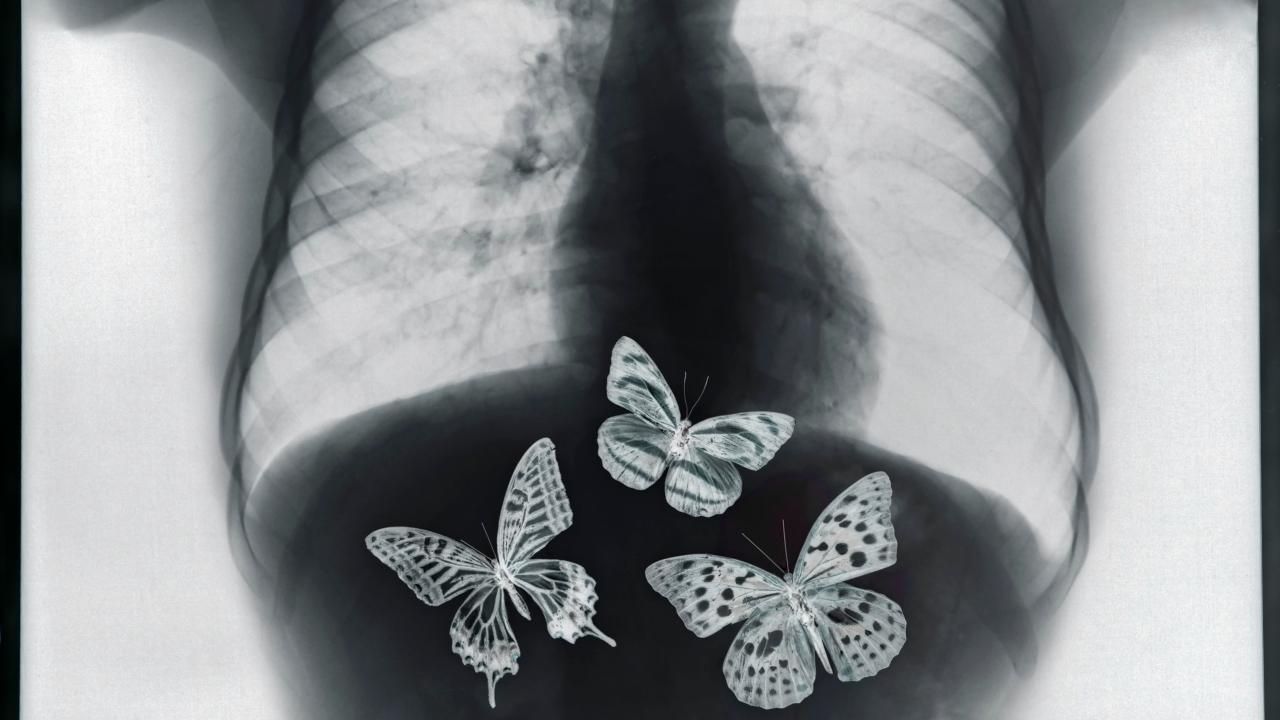
Butterflies In Your Stomach: Trauma Or Anxiety?
“Butterflies” In Your Stomach, Trauma Or Anxiety? What It Really Means
When your stomach flips before a conversation or for no clear reason at all, it can feel confusing and a little scary.
People often call this feeling “butterflies.”
In nervous system language, it is a real body signal that your system is shifting into a state of protection.
For many, this is simple anticipatory stress.
For others, especially after chronic stress or trauma, the gut can react more easily and more often.
This guide explains what that flutter means, how to tell if it is tied to anxiety or trauma, and what gentle steps can help you feel steadier, without pushing your body past its limits.
Curious where your stress is looping right now
Take the quick Stress Loop Quiz and get a simple read on your pattern.
Quick Answer Box
What do butterflies in the stomach usually mean
That fluttery, hollow, or wavy sensation often shows your autonomic nervous system is prioritizing protection over digestion.
Blood flow, muscle tone, and attention shift away from your gut, which can create a swoop, flutter, or drop sensation.
This can happen with normal stress.
If you have a history of overwhelm, your system might enter this state more quickly.
Gentle regulation practices can help many people feel steadier.
The Gut Brain Connection In Plain Language
Your body has two way communication between the brain and the gut.
When you feel stressed, your autonomic nervous system turns up energy for action and turns down energy for digestion.
This is useful if you need to move quickly, it is not as helpful when you are trying to rest or talk or focus.
Three simple points explain the “butterflies” feeling:
-
Attention shifts. Your body scans for safety, so internal sensations change.
-
Digestion slows. Less movement in the stomach and intestines can feel like hollowness or flutter.
-
Muscles brace. Subtle tension in the abdomen and diaphragm can feel tight or wavy.
None of this means you are broken.
It means your body is trying to help.
We can teach it new options.
Anxiety, Trauma, Or Both
It helps to ask three questions.
1) What is the context
If the sensation happens before a meeting, a social event, or a deadline, it may be simple anticipatory stress.
If it appears with small cues that remind you of past overwhelm, even faintly, it may be a trauma shaped pattern.
2) How strong is the intensity
Mild, short waves often settle once the situation passes.
Stronger, sticky waves that linger or spread into dread, numbness, or shutdown suggest your system is more sensitized.
3) What is the recovery time
If you return to baseline in minutes, that is a good sign.
If it takes hours, or if you wake up with a churned stomach most days, it is a sign to add consistent, gentle regulation.
Want a quick snapshot of your current pattern
Take the Stress Loop Quiz to see which loop you might be in today.
Decode Your Pattern In Three Minutes
Use this micro practice when the flutter starts.
It takes three minutes and you can do it anywhere.
Minute 1, Name what is happening
Say quietly, “My body is shifting into protection. This is a body signal, not a verdict.”
Notice where you are, who you are with, and what just happened.
Minute 2, Sense what is present
Place one hand on your belly and one on your ribs.
Feel the contact.
Notice temperature, pressure, and the movement of your breath.
No need to change anything yet.
Minute 3, Choose one small next step
Pick a gentle practice below.
Stay with it for 60 to 120 seconds.
Aim for small shifts, not big fixes.
Gentle Practices To Settle The Gut And Signal Safety
These are body friendly steps.
Stop or switch if anything feels like too much.
Small and consistent beats intense and rare.
Orienting, 60 seconds
-
Slowly turn your head and eyes.
-
Name five neutral details you see.
-
Feel your feet or your seat.
-
Let your eyes land on one thing that feels pleasant or OK.
Why it helps, your vision and neck position signal safety to deeper systems.
When your eyes and head move slowly, your body can relax its guard.
Low And Slow Exhale Set
-
Inhale through your nose for a count of 4.
-
Exhale through soft lips for 6 to 8.
-
Keep the breath small and quiet.
-
Repeat for five cycles.
Why it helps, longer, easier exhales can nudge your system toward rest states.
If big breaths make you edgy, keep the inhale smaller and the exhale soft.
Butterfly Hug, Hands On Self Soothing
-
Cross your arms so your hands rest on your upper arms.
-
Tap left, then right, slowly.
-
Match the taps to a calm phrase like “here” or “safe enough for right now.”
-
Stop if you feel flooded or numb.
Why it helps, rhythmic, alternating touch can support regulation for many people.
Warmth On The Belly
-
Place a warm pack, a mug with warm water, or your palm on your abdomen.
-
Make small circles clockwise.
-
Sip warm water if it feels good.
Why it helps, warmth and gentle pressure can relax abdominal muscles and soothe internal receptors.
The 5 Percent Posture Shift
-
Keep your same position and change it by five percent.
-
Soften your jaw, lower your shoulders, adjust your seat angle, or place both feet flat.
-
Notice any small shift in the gut.
Why it helps, tiny changes in posture can change diaphragm tension and reduce flutter.
Try one, then rest
Notice if your sensation changed in quality, intensity, or location.
A small shift counts as progress.
Everyday Habits That Reduce Gut Flutter Over Time
Anchor Routines
Create two short anchors, one in the morning and one at night.
Each anchor is two to five minutes.
Use orienting, low and slow exhales, or a short body scan.
This teaches your nervous system what calm feels like.
Nervous System Friendly Fuel
-
Eat regularly enough that you do not crash.
-
Include protein, fiber, and a little fat.
-
Notice how caffeine affects your gut and your heart rate.
-
Drink water through the day.
Simple stability in blood sugar and hydration can make stress waves smaller.
Movement Without Pushing
-
Choose gentle walking, relaxed cycling, or mobility work.
-
Stop at pleasant, not exhausted.
-
If high intensity triggers gut flutters, shorten sessions or switch days.
Boundaries That Protect Energy
-
Reduce optional exposure to alarms, conflict, or doom scrolling.
-
Protect a quiet 30 minute window in your day, even if you split it into three short blocks.
Sleep, One Lever At A Time
-
Keep wake time consistent, even if sleep was choppy.
-
Dim lights an hour before bed.
-
Use the low and slow exhale set in bed for three minutes.
A Simple Color Code To Track Progress
-
Green, calm or mostly steady. Small flutters settle within minutes.
-
Yellow, alert or edgy. Flutters arrive with common stressors, settle with one or two practices.
-
Red, intense or sticky. Flutters turn into dread, nausea, or shutdown, and recovery takes hours.
Write a single line each day, “Color, main cue, practice I used.”
After two weeks you will see patterns, which helps you pick the right tool faster.
When To Consider Extra Support
-
The sensation is intense, frequent, or paired with pain, weight loss, fever, or other medical concerns.
-
You avoid daily life because of gut sensations.
-
You have a history of trauma and feel stuck between panic and shutdown.
Professional support can give you a safer container to work with the body.
If you take medications or manage medical conditions, consider talking with your healthcare provider about any new routine.
Frequently Asked Questions
Why do I get butterflies with no obvious trigger
Small cues, like a tone of voice, a location, or a memory fragment, can activate protection.
Your body is fast at pattern matching.
Gentle check ins help you notice and name these cues.
Is this dangerous
Occasional gut flutters with stress are common.
If you have pain, major digestive changes, or ongoing medical symptoms, consider speaking with a qualified professional.
How do I make the feeling stop fast
Try orienting and longer exhales for one to two minutes.
Add warmth on the belly.
Look for a small shift, then repeat later rather than forcing a big change.
Can past trauma cause stronger gut reactions
Yes, a history of overwhelm can prime the system to react more easily.
Consistent, gentle practices help many people widen their window of tolerance over time.
What if deep breathing makes me more anxious
Use smaller, quieter breaths with longer, easy exhales.
Or skip breath work and use visual orienting, posture shifts, or the butterfly hug.
TL,DR
Butterflies in the stomach are a body signal that your system is prioritizing protection.
They can come from regular stress, ongoing anxiety, or patterns shaped by past overwhelm.
You can reduce the intensity by using simple practices, like orienting, low and slow exhales, gentle touch, warmth, and small posture shifts.
Consistency matters more than intensity.
Want a quick read on your current loop
Take the Stress Loop Quiz and get simple tips that match your pattern.
Discover Your Vagal Tone
Find out how dysregulated your nervous system is and get your personalized roadmap to feeling calm, energized, and in control


